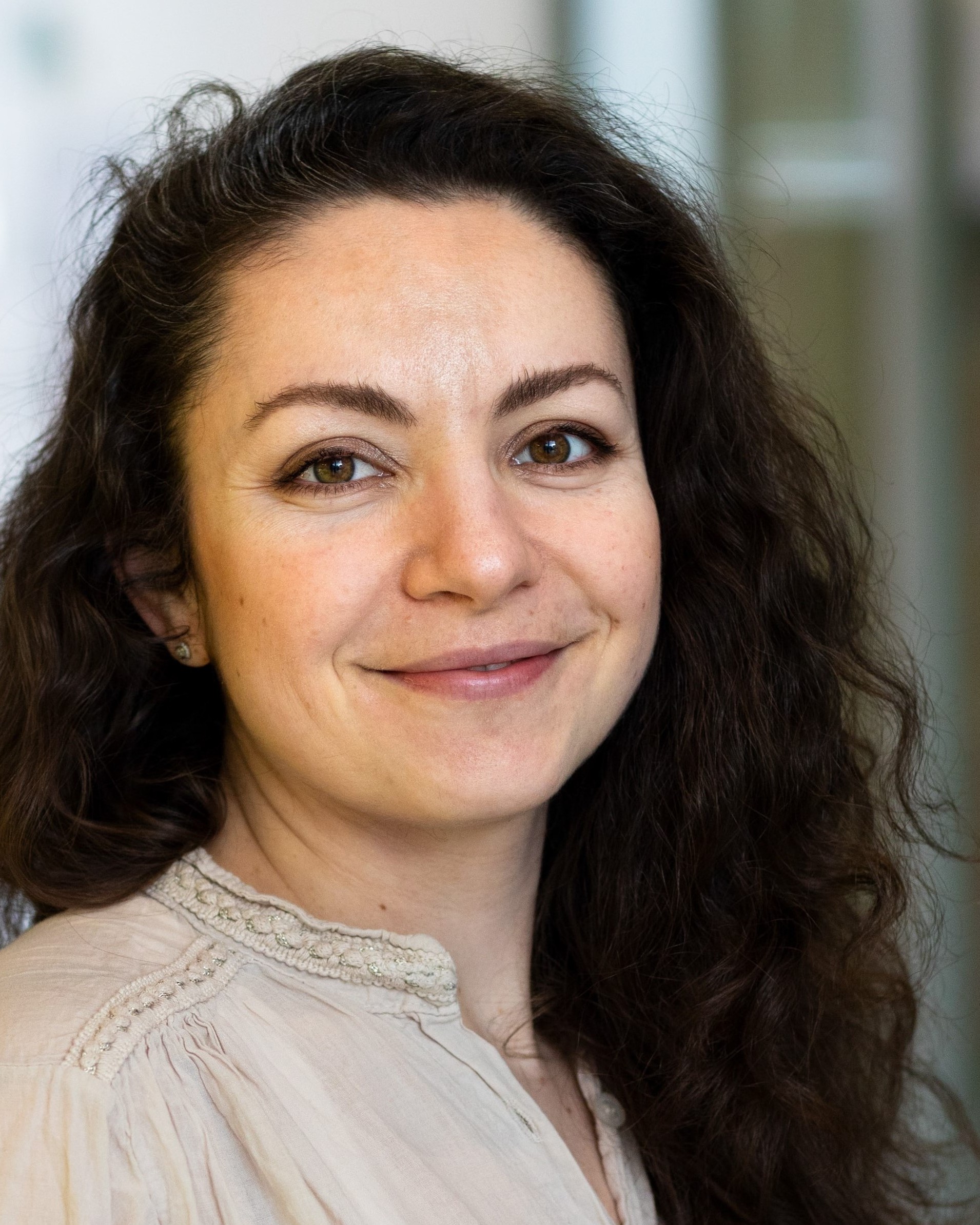
Dr Oleksandra V. Ivashchenko
“For her pioneering contributions to personalized dosimetry, including the development of ultra-low-dose imaging protocols, advanced Monte Carlo simulations for dose evaluation, and innovative modeling of uncertainties in radionuclide therapy.”
Oleksandra V. Ivashchenko is a Medical Physics Expert (MPE) in Radiology and Nuclear Medicine at the University Medical Centre Groningen, Netherlands. She earned an MSc in Applied Physics from Taras Shevchenko National University of Kyiv and began her career at Materialise NV, working on medical applications of rapid prototyping. She later completed a PhD in medical physics as a Marie Curie fellow, developing innovative SPECT/PET/CT technologies that are now widely used in preclinical imaging.
After her PhD, Oleksandra contributed to image-guided surgery systems at the Netherlands Cancer Institute and advanced AI-driven dosimetry optimization during her clinical residency at Leiden University Medical Centre. Her work has significantly improved personalized dosimetry, including low-dose imaging protocols and radionuclide therapy modeling.
Since 2022, she has coordinated radiation safety and dosimetry at UMC Groningen while researching multi-parametric models for therapy personalization. Oleksandra also serves on the EFOMP board and coordinates #ScienceForUkraine, supporting scientists affected by the war in Ukraine.
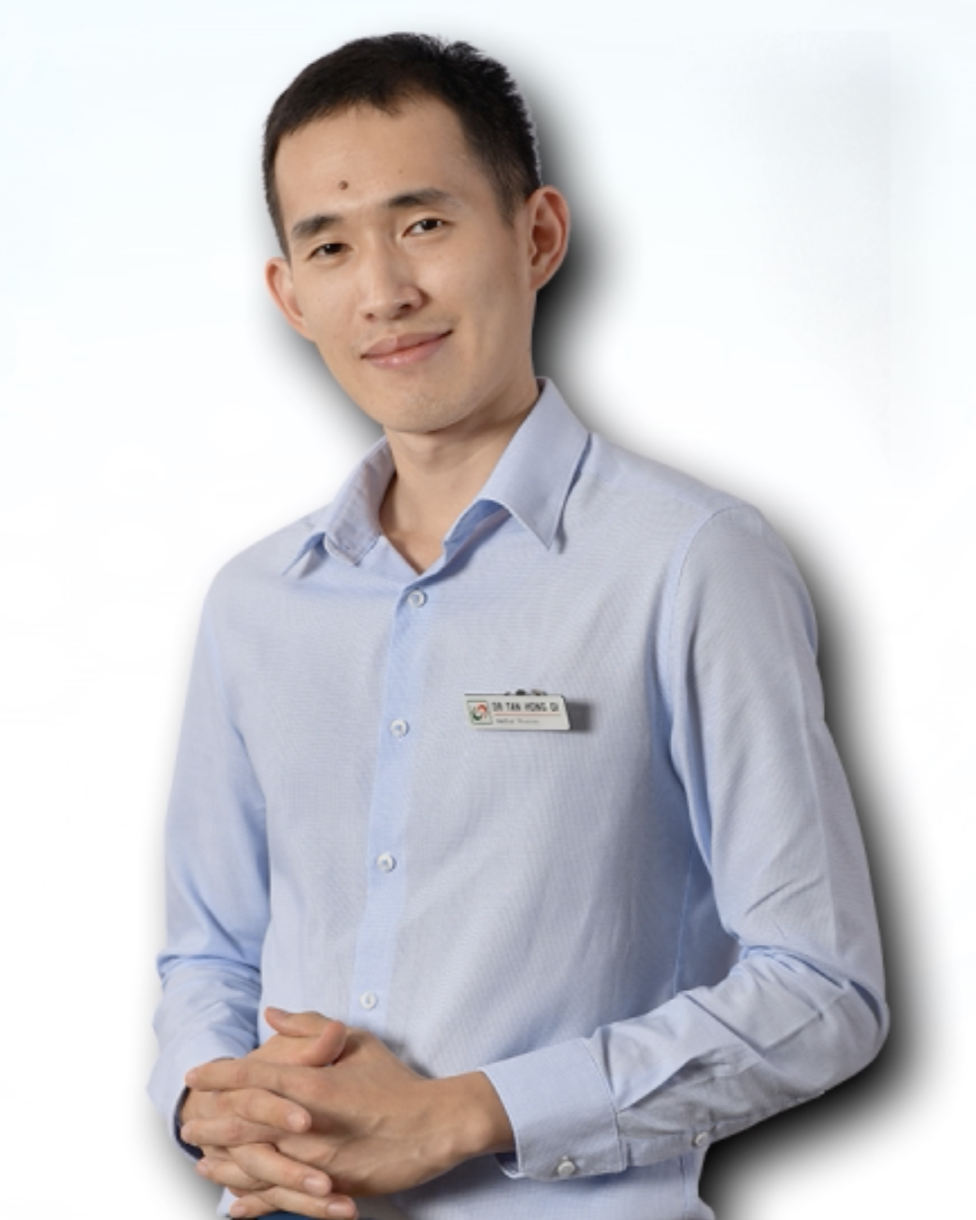
Dr. Tan Hong Qi
“For his contributions to the fields of clinical radiotherapy dosimetry, quality assurance, modelling and the application of artificial intelligence.”
Tan Hong Qi completed his PhD in National University of Singapore (NUS) in 2018 and a B.Sc (First class Hons) Physics from NUS in 2013. He joined National Cancer Centre Singapore (NCCS) in 2018, completed the clinical residency in 2020 and is currently a senior medical physicist in the department of radiation oncology. He is also a clinical instructor in Duke-NUS medical school. In NCCS, he was awarded the IAEA fellowship for attachment to Korea National Cancer Centre in 2022, won the SingHealth AHP young discoverer award in 2021 and SEAFOMP Young Leader award in 2023. He is currently leading the medical physics research group in NCCS with research interests in proton dosimetry, adaptive radiotherapy and application of artificial intelligence in radiation oncology. He has published over 50 peer-reviewed papers and has received research grants of value over 400,000 USD over the past 4 years. He is also currently helping to set up a second major in medical physics in Nanyang Technological University to enhance medical physics education in Singapore.
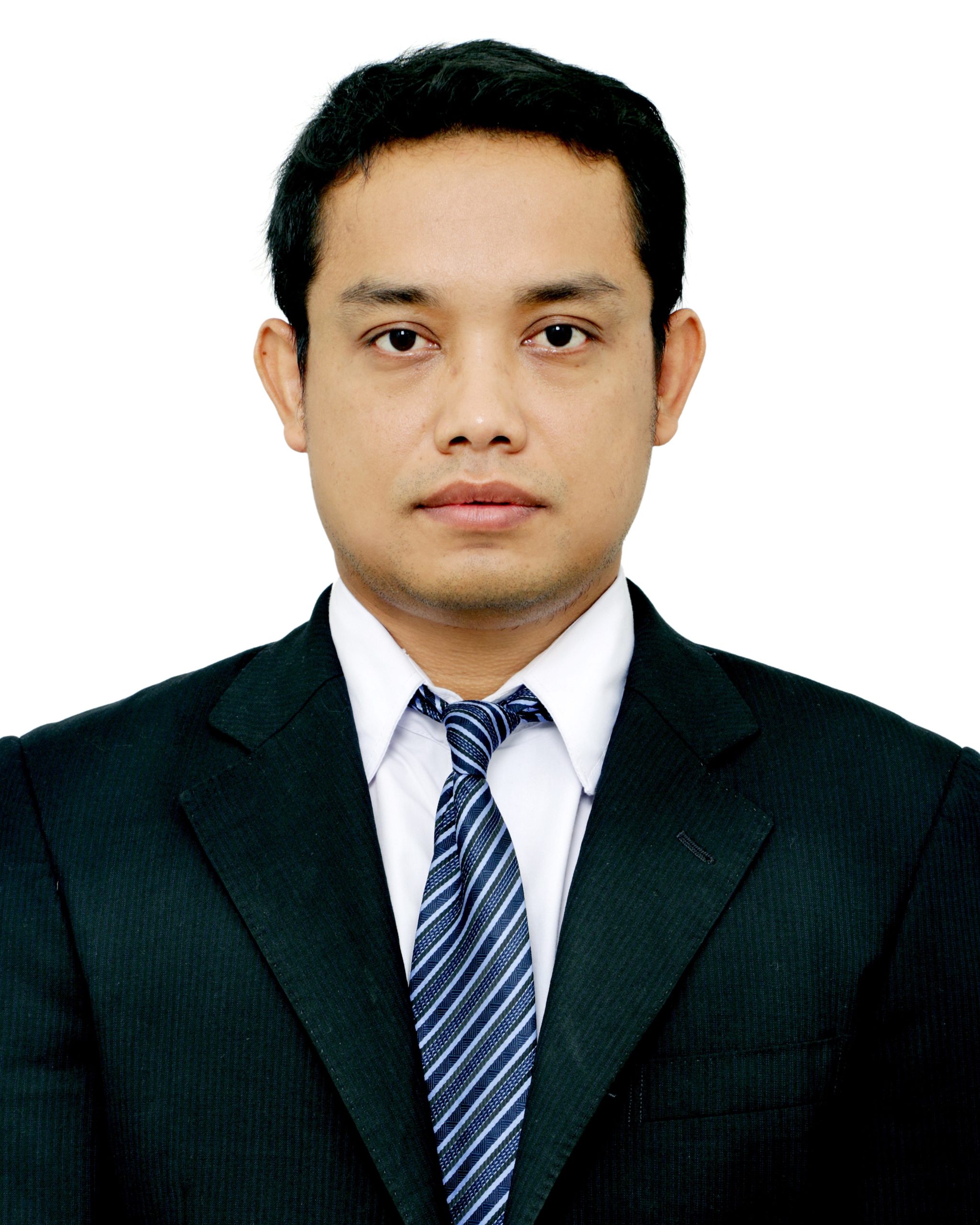
Dr. Choirul Anam
“For his research contribution in medical image processing and dosimetry for diagnostic radiology, particularly in computed tomography.”
Anam completed his Ph.D at Physics Department, Bandung Institute of Technology (ITB) in 2018. He received Master degree from University of Indonesia (UI) in 2010 and the B.Sc degree in physics from Diponegoro University (UNDIP) in 2001. In 2016, he conducted research on computed tomography (CT) dosimetry at Kyushu University (KU). He is currently working as a Lecturer and Researcher at the UNDIP. His research interests are medical image reconstruction, medical image processing, and dosimetry for diagnostic radiology, particularly in CT. He has authored and co-authored over 200 papers. In the last ten years, he was the first author over 50 papers in peer reviewed scientific journals. He is a reviewer in many reputable medical physics journals, such as Medical Physics (Med Phys), Physics in Medicine and Biology (PMB), Journal of Applied Clinical Medical Physics (JACMP), and so on. One of his paper published in the Journal of Applied Clinical Medical Physics (JACMP) had been awarded as the Best Medical Imaging Physics Article in 2016. He received the Best Paper Award during 15th South East Asian Congress of Medical Physics (SEACOMP). He was also recognised as an Outstanding Reviewer for Physics in Medicine and Biology (PMB) in 2018 and for Biomedical Physics and Engineering Express (BPEX) in 2019. He was also awarded as the SEAFOMP Young Leader Awards 2019 for his contribution in CT dosimetry and image quality from the South East Asian Federation of Organizations for Medical Physics (SEAFOMP). In 2022, he was 3rd Best Author in the Science and Engineering category of SINTA, at UNDIP. He is developer of two software, i.e. IndoseCT (A software for measuring and managing radiation dose of computed tomography for an individual patient) and IndoQCT (A software for measuring CT image quality). The software can be downloaded through the website of www.indosect.com.
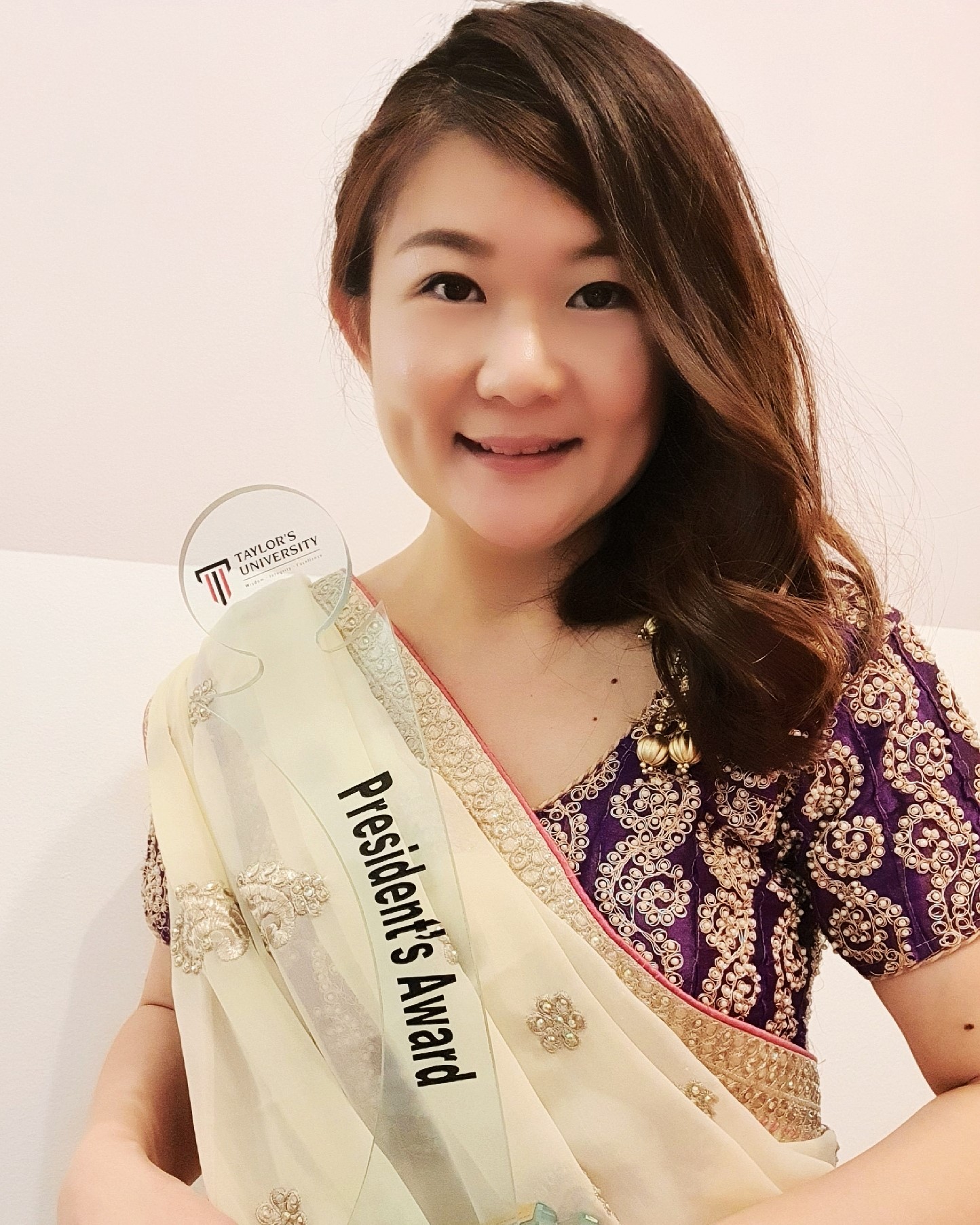
Chai Hong Yeong
“For the production and first use of 153SmCl3-ion exchange resin capsule formulation for assessing gastrointestinal motility”
Dr. Chai Hong Yeong is a medical physicist, a certified Radiation Protection Officer and an Associate Professor at the Taylor’s University, Malaysia. She is one of the few medical physicists in Malaysia who completed the IAEA Clinical Training of Medical Physicists Specialising in Diagnostic Radiology (DRMP). Dr. Yeong is currently chairing the Professional Relations Committee of the Asia-Oceania Federation of Organizations for Medical Physics (AFOMP) 2019-2021. She is also the elected Vice President of the South-East Asia Federation of Organizations for Medical Physics (SEAFOMP) 2019-2021 and Vice President of the Malaysian Association of Medical Physics (MAMP). She is one of the Founding Members of the ASEAN College of Medical Physics (ACOMP), 2014. She has been awarded the SEAFOMP Young Leader Awards in 2017, and Taylor’s University’s President’s Award (Research and Innovation) in 2019. Dr. Yeong is currently leading the Non-Communicable Diseases Cluster at Taylor’s University. Her research areas focus on theranostics, minimally invasive cancer therapies, pharmacoscintigraphy, 3D printing in medicine, radiomics as well as radiation protection and optimization. Her researches have won several local and international awards including the Certificate of Merit awarded by the European Society of Radiology in 2012, and her work has been reported in AuntMinnie.com, the world’s most comprehensive community site for radiologists and related professionals. She currently owns four patents derived from her research. Dr. Yeong has published more than 70 peer-reviewed journal articles, 2 academic books and 2 book chapters. She has been regularly invited to talk at local and international conferences. She also serves as a reviewer for several international renowned journals.
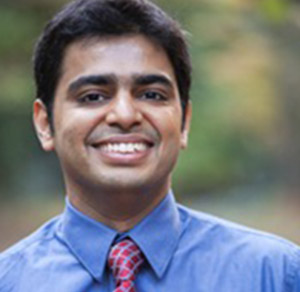
Jaydev K Dave
“For his pioneering work in utilizing subharmonic signals from ultrasound contrast agents (encapsulated microbubbles) for non-invasive real-time in vivo cardiac pressure estimation.”
Jaydev Dave was born in Mumbai, India. He earned his B.E. degree in Biomedical Engineering from Mumbai University, India, in 2006, and his M.Sc. and Ph.D. degrees in Biomedical Engineering from Drexel University, Philadelphia, PA, in 2008 and 2012, respectively. He is currently an Associate Professor of Radiology at the Thomas Jefferson University in Philadelphia, PA. Jaydev is actively involved in ultrasound and applied physics research.
Dr. Dave’s extensive research portfolio spans different areas of medical physics. The primary focus of his research has been in a non-traditional application that he has engineered – using subharmonic ultrasound technology with microbubble contrast agents to perform non-invasive real-time pressure estimation, as a means for replacing manometer-tipped catheters, especially for cardiac applications. As a principal investigator, he has led and completed two national clinical trials investigating the use of subharmonic signals for cardiac pressure estimation. For his research, Dr. Dave has received funding and support from the National Institutes of Health, the American Heart Association and industry partners. Additionally, his scientific research is also related to his clinical imaging physicist role, majorly looking at the interplay between radiation dose and image quality. To date, his research has cumulated to several conference abstracts (100+), published conference proceedings (18), and peer-reviewed publications (35).
In addition to his research, Dr. Dave has been active in mentoring and teaching, with national and international teaching appointments/visiting professorships. He serves as a scientific reviewer for 17 scientific journals, and has also been called upon to act as an expert reviewer for national and international foundation grants, inter-society consensus documents, and draft standards. He has received numerous awards including the award for “Research excellence in recognition of outstanding dedication and achievement in heart disease and stroke research” from the American Heart Association (2015), “Dean’s award for excellence in education at Sidney Kimmel Medical College” from the Thomas Jefferson University (2017), and “Young Alumni – Emerging Leader Award” from the Drexel University (2020).
He is currently a member of the American Association of Physicists in Medicine, the American College of Radiology, the American Heart Association, the American Institute of Ultrasound in Medicine, the IEEE and IEEE Ultrasonics, Ferroelectrics, and Frequency Control Society, the International Contrast Ultrasound Society and the Society of Photo-Optical Instrumentation Engineers. In his free time, he enjoys open-water long-distance swimming!
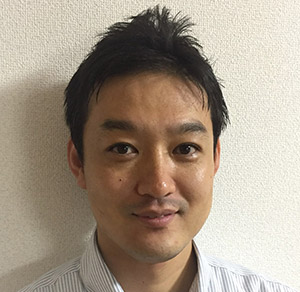
Mitsuhiro Nakamura
Dr. Mitsuhiro Nakamura is an associate professor at Kyoto University, Kyoto, Japan.
Dr. Nakamura’s early work during the four years of his doctoral course – completed at Kyoto University in 2010 – focused on four-dimensional imaging and delivery in radiation therapy for moving tumors. He investigated physical and clinical aspects of four-dimensional computed-tomography. During this work, he developed a visual feedback system, and clinically applied this system to intensity-modulated radiotherapy in combination with breath holding at end-exhalation. This technique was used in a phase I dose-escalation study that showed a significant improvement in the median and 2-year overall survival of patients with locally advanced pancreatic cancer. Thus, this work has made a substantial contribution to improving patient outcomes.
Dr. Nakamura considers that his most meaningful contribution to date has been in the development and clinical application of the Vero system, a radiotherapy unit with an integrated real-time tumor tracking system developed by Mitsubishi Heavy Industries, Ltd., in collaboration with Kyoto University.
Vero is a gimbaled–head radiotherapy device whose unique structure with multi-image-guided radiation therapy functions has initiated two new treatment modalities, such as real-time tumor tracking radiotherapy and Dynamic WaveArc therapy.
Dr. Nakamura has played a central role in the medical physics-related development of these advances.
Among other work, Dr. Nakamura is a member of the Japanese Clinical Oncology Group (JCOG) Radiotherapy Committee, in which role he recently contributed to the development of an on-site dosimetry audit system to support quality assurance in clinical outcomes of JCOG clinical trials.
Internationally, Dr. Nakamura’s academic achievements are attested by his participation in the Global Quality Assurance of Radiation Therapy Clinical Trials Harmonisation Group and a number of other international research collaborations, including projects with Prof. Keall et al and Prof. Verellen et al.
To date, Dr. Nakamura has authored 9 book chapters. He has coauthored 101 papers in the peer-reviewed English literature, 15 as first author and 45 as corresponding author.

Kuo Men
Dr. Kuo Men is an associate professor at Cancer Hospital, Chinese Academy of Medical Sciences, Beijing, China. He did his PhD work 2014-2017 in Medical Physics at Peking Union Medical College under the supervision of Professor Jianrong Dai, and then worked as postdoctoral fellow with Professor Ying Xiao at the University of Pennsylvania. He developed a dual energy imaging technology for online cone beam CT and pioneered deep learning methods to many areas of radiotherapy. The application of these novel methods is groundbreaking and the impact in the clinics is enormous.
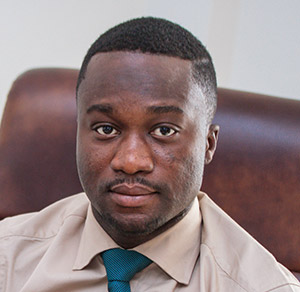
Abdul Nashirudeen Mumuni
Dr. Abdul Nashirudeen MUMUNI is a Lecturer of Medical Physics and Biostatistics in the Department of Biomedical Laboratory Sciences, School of Allied Health Sciences (SAHS) of the Tamale campus of the University for Development Studies (UDS). Dr. Mumuni holds a BSc (First Class Honors) Degree in Applied Physics with Environmental Science from the UDS, an MSc (with Commendation) in Medical Physics Computing from the University of Aberdeen, UK under the CSFP/ACU Scholarship Award, and a PhD in Clinical Physics with specialization in Neuroimaging and Psychological Medicine from the University of Glasgow, UK under joint Scholarship Awards from the Scottish Imaging Network: A Platform for Scientific Excellence (SINAPSE, UK), the University of Glasgow and the Sackler Institute for Psychological Research.
Dr. Mumuni represents the SAHS-UDS on the Ghana-Norway Collaboration in Medical Physics and Radiography Education Project (NORPART), which is a research and capacity building initiative between Ghana and Norway.
Dr. Mumuni’s PhD research focused on the development of novel techniques of in vivo acquisition and quantitation of single-voxel magnetic resonance spectroscopy data from the human brain. His PhD work resulted in eight (8) peer reviewed journal articles and over ten (10) conference abstracts presented at both national and international conferences.
Dr. Mumuni’s current research focuses on the in vivo applications of medical imaging techniques, particularly Magnetic Resonance Imaging and Spectroscopy, X-ray imaging, and Computed Tomographic imaging, in quantitative studies. He also has research interest in the areas of Applied Mathematics and Physics.
Dr. Mumuni has developed and submitted a 4-year curriculum in BSc Medical Imaging Technology (BSc MIT) to the Allied Health Professions Council and the National Council for Tertiary Education for approval; the programme is planned to commence in the 2018/2019 academic year following approval and accreditation. He also plans to mount other related programmes in Medical Physics including postgraduate studies later, after the commencement of the BSc MIT programme.
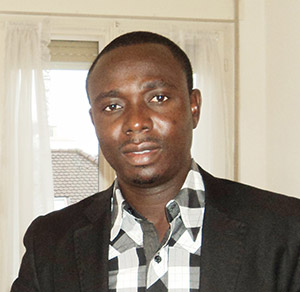
Francis Hasford, PhD
Medical Physics Department
School of Nuclear and Allied Sciences
University of Ghana
Dr. Francis Hasford is a Senior Research Scientist with the Radiological and Medical Sciences Research Institute of Ghana Atomic Energy Commission and also serves as Lecturer and Head of the Medical Physics Department of the School of Nuclear and Allied Sciences, University of Ghana. Dr. Hasford obtained his Masters and PhD degrees in Medical Physics from the University of Ghana in 2006 and 2015 respectively. His PhD thesis titled “Ultrasound and PET-CT Image Fusion for Prostate Brachytherapy Image Guidance,” was undertaken through IAEA sandwich fellowship programme between the University of Ghana and the University of Witwatersrand (South Africa). This research was performed under supervision of Prof. John Amuasi, Prof. Kwame Kyere and Prof. Mboyo Di-Tamba Vangu. Outcome of his study has been presented at national and international conferences and was adjudged best poster presentation the Maiden University of Ghana Doctoral Conference. His research interest covers medical imaging in support of radiation therapy. Dr. Hasford is the Deputy General Secretary of Ghana Society for Medical Physics, Chairman for the Education and Training Committee of the Federation of African Medical Physics Organizations (FAMPO), and Ghana’s Coordinator for the IAEA Technical Cooperation Project RAF 6044 (Medical Physics in Support of Cancer Management). In 2016, he served as visiting lecturer on behalf of the IAEA for the Medical Physics Masters Programme at the National University of Science and Technology, Bulawayo, Zimbabwe.
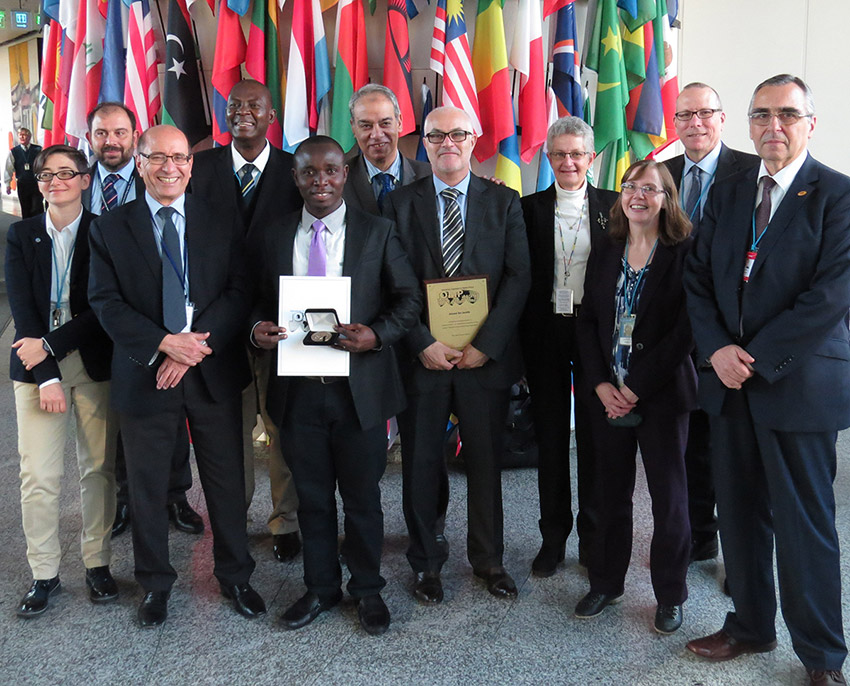
Francis Hasford (5th from left), flanked by several leads of medical physics from the African continent (the President of the African Federation; the Presidents of IOMP Societies in Nigeria, Egypt, South Africa; Morocco), also the Head of the IAEA Section on Dosimetry and Medical Radiation Physics; and other IAEA staff from various countries involved in the project supporting Africa. The medal was presented to Dr Hasford by Prof. Slavik Tabakov, President of IOMP
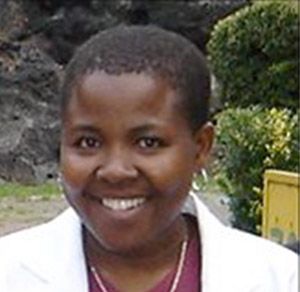
Guerda Massillon-JL, PhD
Instituto de Física,
Universidad Nacional Autonoma de Mexico, México
Dr Guerda Massillon was born in Bassin-Bleu, a little town situated at the Northwest of Haiti, and moved to Port-au-Prince, the capital of Haiti to obtain a BSc in Physics from the Universite d’Etat d’Haiti in July 1996. She moved to Mexico City in 1998 where she earned an MSc in Medical Physics and a PhD from the Universidad Nacional Autonoma de Mexico (UNAM).
In February 2007 she was appointed by the Institute of Physics, UNAM as a Research Associate to work on dosimetric properties of materials exposed to high-ionization density radiation fields. Simultaneously, she granted permission to undertake 2 years post-doc at the National Institute of Standards and Technology (NIST), Gaithersburg, MD USA where she led part of the research project: “Absorbed dose measurement for low-energy photon brachytherapy Sources” collaborating with Drs. Christopher G Soares, Michael G Mitch and Ronaldo Minniti. After her return to UNAM in 2010, she was promoted as Assistant Professor. Since then, she has been concentrating on two research projects:
1) “Response of dosimetric materials exposed to low-energy photons”;
2) “Reference dosimetry for small radiotherapy fields”.
Since 2009, Guerda Massillon is lecturing in the Post-Graduate Program in Physical Sciences (PCF), UNAM, and has supervised several postgraduate students in Medical Physics. She was invited as Visiting Professor at NIST, USA and at Carleton University, Ottawa, Canada collaborating with Prof. David W O Rogers on Monte Carlo Applications to radiation dosimetry. Guerda Massillon has published 20 peer reviewed papers and is a regular reviewer for many journals including Phys. Med. Biol and PLoS ONE.
In 2011, Guerda Massillon has been awarded as a Fellow of the InterAmerican Network of Academies of Sciences (IANAS) for her research and scholarly competence as well as her potential for helping to strengthen science and technology capacity in the Americas and cooperation between researchers and institutions in her field of study. In Mexico, she has been recognised as National Researcher Level II from the Mexican National System of Researchers (SNI) in January 2014.
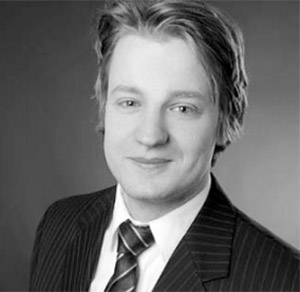
Jan-Bernd Hövener, PhD
Head of Hyperpolarization Research Freiburg,
University Medical Center Freiburg, Germany
Dr. Jan-Bernd Hövener was born in Münster (Westfalen), Germany, and studied Physics and Business Informatics at the “Westfälische Willhlems Universität” in Münster. After receiving his Vordiplom (intermediate diploma) in 2001, he moved on to the University of Heidelberg. He spend two semesters abroad in France at the “Université Nice Sophia Antipolis”, where he took part in the “Maîtrise Physique” and “DESS biomedical”, including subjects on fluid dynamics and statistical physics.
After returning to Heidelberg, he finished the final exams and carried out his diploma thesis with Prof. Bachert at German Cancer Research Center (DKFZ) entitled “Development of a technique to determine non-invasively the total content of N-Acetly-L-Aspartate in the human brain in vivo”. This work was the starting point for a joint research project with Prof. Gass (Mannheim) and Prof. Gonen (New York). In the course of this project, Dr. Hövener spend several month followed by multiple visits as a visiting scientist in the lab of Prof. Gonen at New York University (NYU).
For his PhD, Dr. Hövener decided to join the hyperpolarization research group at the California Institute of Technology (CalTech, Prof. Weitekamp), and the Huntington Medical Research Institutes (HMRI, Profs. Bhattacharya and Ross), both in Pasadena, USA, for two years. Upon his return to Germany, he defended his thesis after total time of two years and seven month with the mark “magna cum laude” (very good) at the University of Heidelberg, Faculty of Physics and Astronomy.
During this time, he contributed essentially to the development and application of parahydrogen-based hyperpolarization of biomolecules, which is reflected by several manuscripts, conference contributions and awards.
Building on the existing contacts, Dr. Hövener was invited by Prof. Hennig in 2009 to implement an entirely new hyperpolarization program in Freiburg. In the same year, the concept of this endeavour was voted “best talk” at the Annual Meeting of the Int. Society of Magnetic Resonance in Medicine (ISMRM), German Chapter, in Basel, Switzerland.
In 2010, Dr. Hövener was admitted to the Academy of Excellence of the German Science Foundation (DFG). Supported by this award, Dr. Hövener was able to expand his group and to date has supervised more than ten students, is teaching in Freiburg and has published more than 15 papers and numerous peer-reviewed or invited conference contributions. His standing in the scientific community is reflected by his election to the board of the ISMRM German Chapter and his function as reviewer for scientific journals and funding agencies (including e.g. Angewandte Chemie int. ed., e.g.).
The preliminary peak of work is represented by the discovery of the effect of continuous hyperpolarization, which was subject of several press releases and found a broad echo in the national news media. His future potential and past accomplishments were recognized by the admission to the Emmy-Noether Program (ENP) of the DFG. The ENP is awarded to internationally experienced scientists in order to accelerate the academic carrier towards scientific independence (> 1,000,000 €).
In his leisure time, Dr. Hövener teaches sailboat racing to children, organizes sailing camps and, time permitting, competes himself. He enjoys all sorts of water sports, mountain biking, running before or after work and swimming in the next lake.
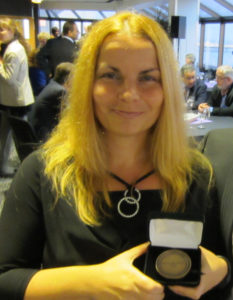
Magdalena Stoeva, PhD
Assoc. Prof., Dipl. Ing., Dr. MAGDALENA STOEVA, PhD
Dr. Magdalena Stoeva holds Master’s degrees in Medical Physics and Computer Science and a Ph.D. in Diagnostic Radiology/Medical Physics.
Dr. Stoeva currently serves as Associate Professor in the Medical Imaging Department, Medical University of Plovdiv, Bulgaria, and is responsible for teaching over 300 students in medical physics, medicine, dentistry, and post-doctoral in various topics related to Medical Physics and Equipment, Physics of Diagnostic Imaging, Radiation Protection, and Quality Control. She has over 10 years teaching experience at the Technical University, Medical University, and International Medical Physics Center in Plovdiv, Bulgaria, and ICTP, Trieste, Italy.
Dr. Stoeva actively participates in six international projects under TEMPUS and Leonardo da Vinci European Union programs. She is a co-author and leading IT developer for the projects European Medical Imaging Technology Training (EMIT) and European Medical Imaging Technology e-
Encyclopaedia for Lifelong Learning (EMITEL) and is the leading developer of the website for the e-Encyclopedia of Medical Physics and related Multilingual Dictionary. In recognition of Dr. Stoeva’s work, she has received several awards, including: the 2004 Lenardo da Vinci Award to acknowledge achievements in education and training, the 2012 IOMP Award for Website Development, the 2012 International Union of Pure and Applied Physics (IUPAP) Young Scientist Award.




